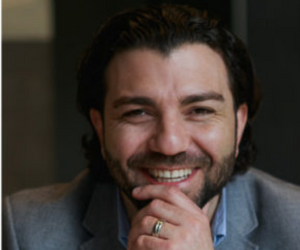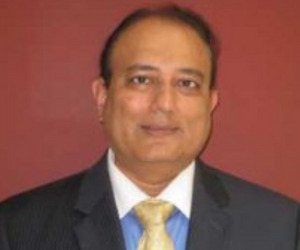Migraines
MIGRAINES ARE A GENDER-RELATED DISORDER
In the course of a year, 18% of American women will have at least one migraine headache while the corresponding percentage for men is 6%. There are strong hormonal links to migraine, with the incidence of migraines going up rapidly at menarche. In addition, falling levels of estrogen in the days immediately preceding menstruation are associated with an increased risk of migraine attacks. During pregnancy, migraine headaches tend to be either stable or a little worse in the first trimester but usually improve in the second and third trimesters.
Fluctuating hormones also impact women during menopause. During peri-menopause, migraines tend to be worse than when the women were cycling regularly and also worse than for women who have not had a period for a year or more.
SOCIOECONOMIC RISK FACTORS FOR MIGRAINE
For many years we thought that having a high socioeconomic level meant a greater risk of migraines. More recently, we have come to understand that wealthy, educated people are more likely to seek treatment and therefore were over-represented in clinic-based studies. We now know that there is an inverse relationship between socioeconomic status and migraines. As income and education go down, the prevalence of migraine goes up.
AGE AND GENETICS AS RISK FACTORS FOR MIGRAINE
The prevalence of migraine is highest between the ages of 25 to 55, though migraine is more common at all ages after puberty. Unfortunately, those are the key productive years. We know from twin studies and family studies that genetic factors account for 50% of migraines.
THE FOUR STAGES OF A MIGRAINE
The Premonitory Stage begins hours or even days before the migraine. It can include: mood changes, food cravings, changing in fluid balance, and difficulty concentrating.
The Aura Stage consists of neurologic symptoms, which are most often visual. While some doctors believe that the presence of aura is necessary for a diagnosis of migraine, in fact only 20-30% of people with migraine experience aura, and this means migraines are often under diagnosed. Be aware that those who do experience aura are more at risk for cardiac events or stroke.
The Headache Stage typically lasts 4 to 72 hours although in children it may be shorter. The pain is pulsing and often limited to one side. It may be aggravated by routine exercise, and frequently there is sensitivity to sound, light, or odors. There may also be nausea and vomiting.
The Resolution Stage is which the headache pain has subsided, but there may be allodynia; the person is hypersensitive to stimuli that are ordinarily not painful such as wearing earrings or brushing her hair. There can also be mood changes, food cravings, and fatigue.
WOMEN SHOULD KEEP A HEADACHE DIARY
Estrogen fluctuations are a powerful trigger for many but not all women with migraines. Trigger factors vary from woman to woman. Keeping a headache diary is important because a factor such as red wine may trigger one woman while having no impact on her neighbor. Other common triggers include relaxation after stress (let-down), too little sleep, falling barometric pressure, monosodium glutamate (MSG), and artificial sweeteners among other factors. For free downloadable headache diaries, go to: http://www.achenet.org/resources/headache_diaries/
RISKS FOR CHRONIC MIGRAINES
Chronic migraines are characterized by having a migraine at least 15 days per month for at least three months. At this level, the harm to an individual’s professional and social life can be severe. Women with chronic migraines may get fired, kicked out of graduate school or experience disruption in family life. Risk factors for chronic migraine include: obesity, asthma, depression, allodynia, and suboptimal treatment of headache attacks. Drugs prescribed to relieve headache, particular narcotic analgesics and barbiturate-containing analgesics, if overused, increase the risk of headache progression. Most specialists don’t use them because the price of short-term relief may be long-term worsening of a headache problem. In fact, Dr. Lipton states that 30% of his professional life consists of taking migraine sufferers off opioids.
NON-PHARMACOLOGICAL TREATMENT
Identifying and avoiding trigger factors is an important non-pharmacologic approach. For dietary triggers, avoidance is the key. If relaxation after stress is a trigger, stress management approaches such as yoga, meditation or biofeedback can be helpful. Some people “catastrophize” when they feel a headache coming on. They may think, “OMG it’s coming on, I’m going to miss work and my boss is going to fire me!” These thoughts amplify pain and make headache worse. Catastrophizing can be addressed by recognizing and changing the approach. However, at times, Cognitive behavioral therapy is most helpful.
ACUTE PHARMACOLOGICAL TREATMENTS
Acute treatments are taken at the time of an attack to relieve pain and restore function. Over-the-counter (OTC) medications are helpful for people with mild to moderate migraine. Useful treatments include aspirin and nonsteroidal anti-inflammatory agents (NSAIDs), such as ibuprofen or naproxen, as well as combination products that contain caffeine. Advil® migraine (ibuprofen 400 mg) and Excedrin® migraine (aspirin, acetaminophen and caffeine) are FDA-approved acute migraine treatments.
Prescription strength NSAIDs are also helpful. Triptans, a class of medications available since the 1990s, are now the mainstay of migraine prescription therapy for the severe end of the migraine spectrum. Both NSAIDs and triptans are taken in tablet at the onset of the attack. Some people with migraine have problems taking tablets by mouth. Some patients vomit and cannot absorb a drug. Others find that oral agents exacerbate nausea. Still others develop gastric paresis, a partial paralysis of the digestive system. If this happens, medications may not be absorbed.
For the patient who cannot take or absorb tablets, there are several alternatives. Powders are an option that are more rapidly absorbed. There are also nasal sprays, patches and injections which bypass the digestive system and bring more rapid relief. If initial treatment does not bring the desired results, the options are to change the route of administration, the drug or to offer combination therapy. When pain relief is too slow, faster oral therapies or non-oral therapies may bring welcome relief. If headaches recur after initial relief, longer acting drugs or combination therapy are helpful.
PREVENTATIVE PHARMACOLOGICAL TREATMENTS
Preventive treatments are usually taken on a daily basis to reduce the number of headaches a patient experience. Widely used preventive drugs include beta-blockers, antiepileptic drugs and tricyclic antidepressants. Riboflavin (Vitamin B2) in doses of 200mg bid reduces headache days per month with very few side effects. Onabotulinum toxin A is an FDA-approved preventive treatment for chronic migraine (headache 15 or more days per month) and is often very effective.
SHORT-TERM PREVENTIVE TREATMENT (MINI-PROPHYLAXIS)
This treatment strategy involves taking drugs during a period of increased risk for headache to keep them from occurring. The best-developed application is the short-term preventive treatment of migraine with menses. If headaches regularly occur from two days before through the first day of flow, there are several options. Starting a long-acting NSAID (eg, naproxen 500 mg bid) or a long-acting triptan (e.g, frovatriptan 2.5 mg bid) 1 day before the expected headache and continuing through the period of increased risk may prevent headaches.
Search Articles
Latest Articles
The Hidden War: How Hybrid Warfare Targets Democracy
https://foreignpress.org/journalism-resources/the-hidden-war-how-hybrid-warfare-targets-democracy Publication –foreignpress.org
Hybrid Warfare: The West Needs to Stop Playing Defense
https://foreignpress.org/journalism-resources/hybrid-warfare-the-west-needs-to-stop-playing-defense Publication –foreignpress.org
The Invisible Wounds of California’s Wildfires
https://foreignpress.org/journalism-resources/the-invisible-wounds-of-californias-wildfires Publication –foreignpress.org
Investing in Ukraine: A High-Potential Market with Some (Literal) Landmines
https://www.wealthmanagement.com/high-net-worth/investing-ukraine-high-potential-market-some-literal-landmines Publication –wealthmanagement.com
Subscribe to Updates
About Author

Mitzi Perdue is the widow of the poultry magnate, Frank Perdue. She’s the author of How To Make Your Family Business Last and 52 Tips to Combat Human Trafficking. Contact her at www.MitziPerdue.com
All Articles
Why You Need a Family Legacy Mindset
Why You Need a Family Legacy MindsetWhen Vincent Valeri joined the wealth management industry in 2011, he realized there was an extraordinary gap in what most of these organizations offered and what almost all families need. The organizations, he discovered, might be...
Putting the “Family” in Family Business: It’s Worth It
Putting the "Family" in Family Business: It's Worth ItHere’s a question for you: to qualify as a family business, do at least some members of the business need to be related by blood or marriage? Tobi Silver, President of Sterling Resources, LTD has a simple,...
How to Make Your Family Live up to Its Promise
How to Make Your Family Live up to Its PromiseLisa Niemeier, family office consultant and founder of graymatter Strategies LLC, feels that family wealth is a gift. Too often and with too many families, this wonderful gift isn’t allowed to live up to its promise. In...
Silver Arrow’s Secret Sauce: An Investment Thesis Approach
Silver Arrow’s Secret Sauce: An Investment Thesis ApproachLet’s suppose a delightful situation. One way or another (maybe through inheritance, or you got a bonus, or you sold your company) you have some money available to invest. It’s a responsibility. What’s your...
How to Preserve Your Legacy, Using a Stone-Age Technique
How to Preserve Your Legacy, Using a Stone-Age TechniqueAndrew Suhl has added an electronic twist to a Stone-Age practice. Amazingly, the ancient practice we’re talking about is one that even today is one of the most essential tools for keeping your family together...
Seven Tips for Personal Cyber Security
Seven Tips for Personal Cyber SecurityRajesh Mahadwar, CEO of Softkey,Inc., is a great friend of mine, and we bonded over a shared interest in cyber security. He knows my opinion, that if you don’t get this right, you’re letting yourself in for a world of misery and...






